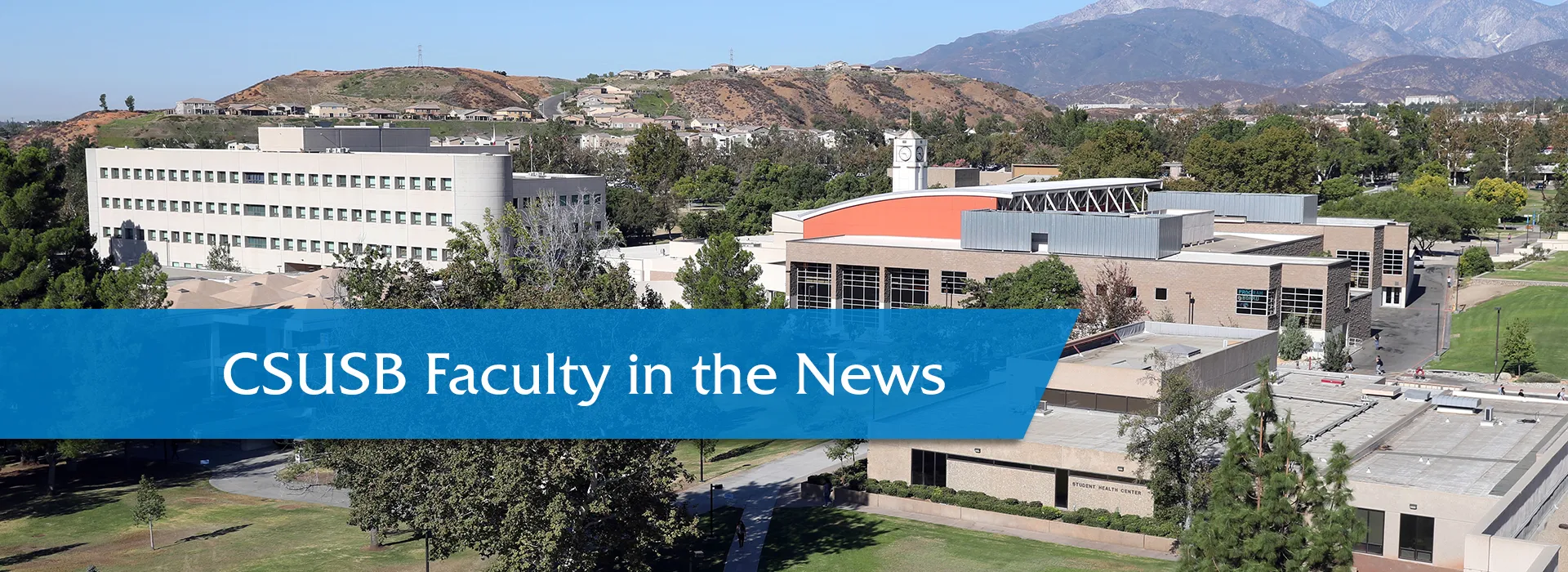
NOTE: Faculty, if you are interviewed and quoted by news media, or if your work has been cited, and you have an online link to the article or video, please let us know. Contact us at news@csusb.edu.
CSUSB’s Kate Liszka writes on ‘Preserving and modelling Egypt’s Wadi el-Hudi for the world’Council of American Overseas Research CentersJune 13, 2018
In this essay, Kate Liszka — CSUSB assistant professor of history, director of the Wadi el-Hudi Expedition in Egypt’s Eastern Desert and one of CAORC’s first grantees for the J.M. Kaplan Responsive Preservation Initiative — discusses the innovative and high-tech methods being used to document an important but now threatened mining site from Egypt’s pharaonic past.
An excerpt: “Yet, despite standing like time capsules in the desert for millennia, the sites of Wadi el-Hudi are today under imminent threat of destruction because modern mining companies are being allowed to remine the desert for its stone resources, including gold, barite, and granite. The modern mining companies, however, are targeting ancient mines as places where they know they will find sure-fire prizes. It is a modern gold rush on ancient gold mines which threatens to obliterate what they preserve for us of the past.”
Liszka, the Benson and Pamela Harer Fellow at CSUSB, has directed the Wadi el-Hudi Expedition in Egypt’s Eastern Desert since 2014. Her areas of specialization are Nubians in Egypt, the Medjay, ethnicity and identity in antiquity, multicultural interactions in frontier regions, and large-scale mining expeditions in antiquity.
Read the complete article at “Preserving and modelling Egypt’s Wadi el-Hudi for the world.”
Multimedia event at CSUSB showcases diversityInland Empire Community NewsJune 13, 2018
Who knew tamales were good with a side of diversity?
On Thursday, June 7, Liliana Conlisk Gallegos’ communication studies students put on a multimedia showcase called “Our San Bernardino, Nuestro’” where the diversity of California State University, San Bernardino was presented, along with personal testimonies.
“They were discussing a lot of issues of ethnicity, race, and overall judgment on appearance,” remarked Andy Guzman, a 23-year-old American studies major. “I myself deal with a lot of that judgment.”
Through the use of traditional and newer media, students were able to capture videos of what other students on campus thought made their university so diverse.
The event in the high-tech classroom counted as a final exam feature for the class–which was taught using experimental media methods.
“It invites creativity,” said Conlisk Gallegos. “[This type of] classroom helps students have a different mindset when they come in.”
Read the complete article at “Multimedia university event showcases diversity.”
CSUSB professor emerita contributes to paper on turquoise in MesoamericaScience AdvancesJune 13, 2018
Frances F. Berdan, Cal State San Bernardino professor emerita of anthropology, was on of the authors of a research paper exploring the question of whether Aztec and Mixtec turquoise was mined in the ancient American Southwest.
“Archaeologists have long suggested that prehispanic states in Mesoamerica acquired turquoise through long-distance exchange with groups living in what is now the American Southwest and adjacent parts of northern Mexico,” the abstract reads.
Researchers used lead and strontium isotopes to test 43 Mesoamerican artifacts held by the Smithsonian’s National Museum of the American Indian that “have isotopic signatures that differ from turquoise deposits in the American Southwest, but closely match copper deposits and crustal rocks in Mesoamerica. We thus conclude that turquoise used by the Aztecs and Mixtecs likely derives from Mesoamerican sources and was not acquired through long-distance exchange with the Southwest.”
Read the complete article at “Was Aztec and Mixtec turquoise mined in the American Southwest?”
These news clips and others may be found at “In the Headlines” on the Inside CSUSB website.